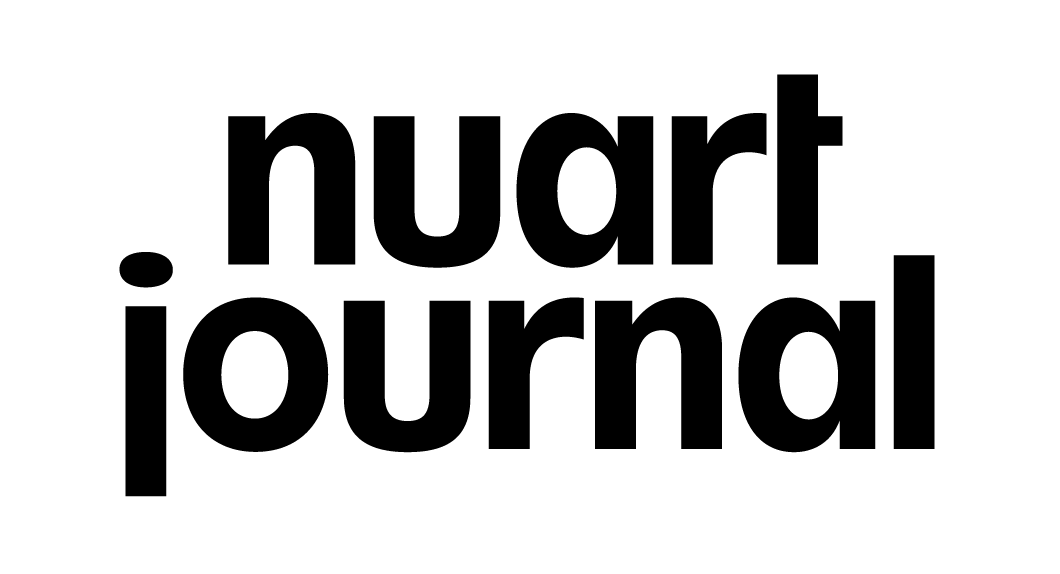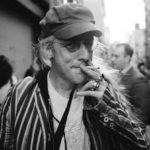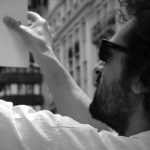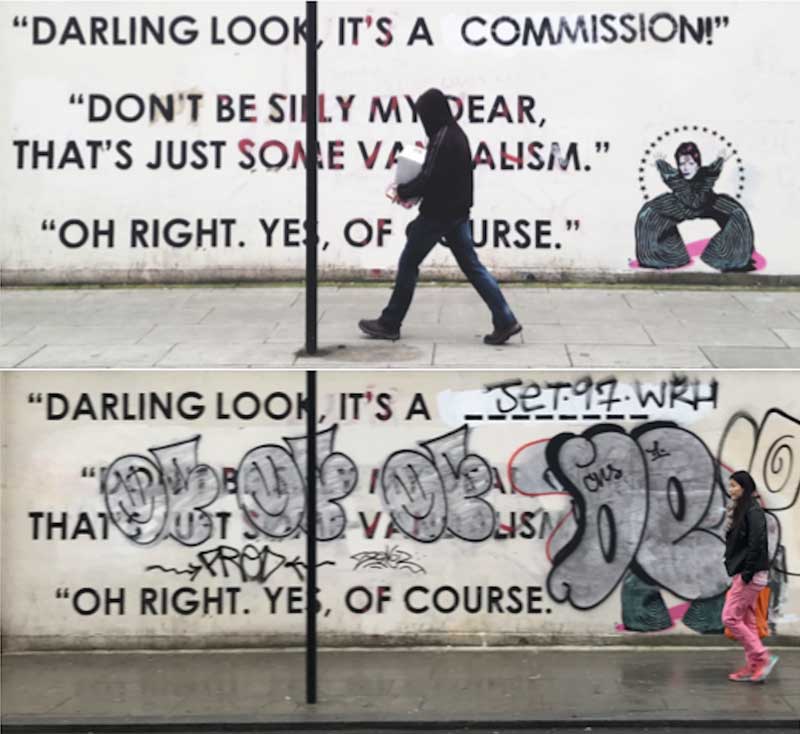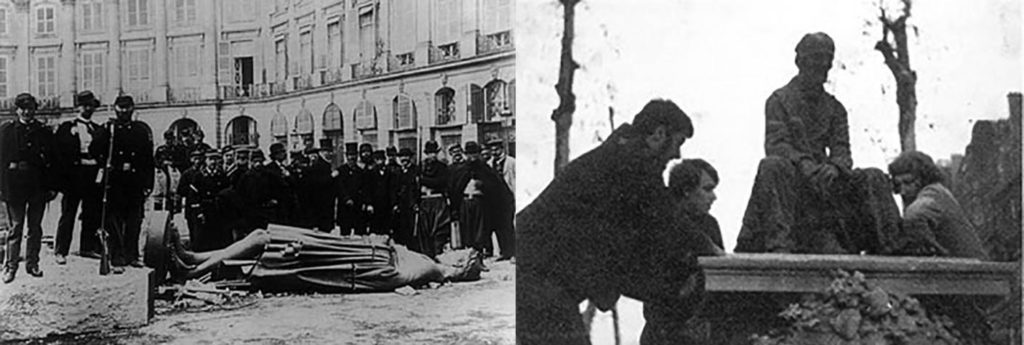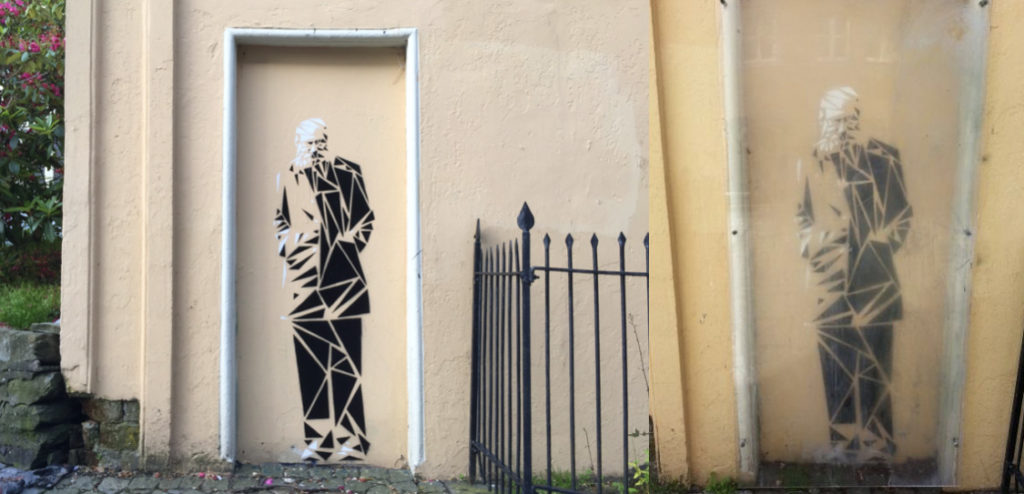One, Two, Three … Swing!
On “Duality” BLACKWHITE for Autodidact Magazine.
Martyn Reed is an artist, researcher, producer and in his own words, an “ambivalent curator” dedicated to the democratisation of art production through the promotion of street art practice. His projects are designed as a critical response to the cultural hegemony whilst offering a celebration of radical DIY alternatives. He is a graduate of Jacob Kramer (Leeds) and Hornsey School of Art (London).
Arts and culture journalists often ask how and why I started Nuart, what was it that gave me the impetus to create and curate a “Street Art” festival. Nuart was established in 2001 as the sister festival to Numusic, an electronic music festival that I established in 2000 in an attempt to bridge the gap between contemporary academic art music and club culture, “High Art” and “Low Art” if you like, my body decidedly occupying the “low”, whilst my mind tried to connect the dots on the “high” side.
Nuart operates between a similar duality, “Art as Art” and “Art as Life”, between an establishment art built on “specific knowledge” being imparted from on high, and a more autonomous DIY art built on a type of “nonknowledge”, the picking over and reconstituting of elements from the detritus of life. It’s between this duality, in the area that critical biologist Gilles Clement has termed “The Third Landscape”, a fragmentary territory, imbued with great symbolic value but nevertheless residual, undecided, suspended, that genuine and critical street art situates itself. It occupies a kind of totally autonomous zone where real life, and by default real art, lives and dies. Nuart was created primarily to provide a platform where the work created between the light and shadow of moonlit chiarascurro’esque back streets, could for a short moment, shine; and then, if necessary, die back into itself.
I could equally tell these journalists that we continue with Nuart because over the years we’ve seen many contemporary art institutions and their curators become neoliberal courtiers to the elite, consummate careerists whose loyalty is to their own advancement and the stature of the institutions they work for rather than Art per se. Or how about, the Contemporary Art Museum, like all elite institutions, has become a hermetically sealed echo chamber staffed by mediocre “liberal” careerists paying lip service to “issues” in the hope of one day being invited to curate another provincial “biennale banal”, dripping with doctorate privilege whilst exploiting rather than properly exploring issues faced by migrants and the poor. Or perhaps I could mention that for decades, the state has imprisoned poor people for expressing themselves through art on the only surface they have access to, the cities walls, whilst artists and the institutions and associations that supposedly represent this virtuous thing called “Art” have remained criminally silent about their incarceration. Or, It’s not that I don’t like curators, it’s just that many seem to live in a sealed white cube whose walls are the boundaries of their total existence, an existence populated by the myths and legends of an art history more commonly used to disenfranchise those less privileged than themselves. A $100 million Documenta on Capitalism anyone? (L)Earning from Athens indeed. Or, how about, the police have been known to shoot people of colour engaged in creating art, allegedly mistaking the spraycan for a handgun, and again the art world sits idly by whilst young artists bleed into the dirt, many art institutions and curators still quite happy to denounce the art they make, the Graffiti and Street Art, under the general rubrik of “that’s not real art”, whilst genuflecting to the niche aesthetic interests of the affluent middle class.
So yes, there has to be alternatives to this duality, right?
Where to look, where to look, how to liberate art, or at least some part of it, alongside the resources that go with it, from the clutches of this bourgeois cultural hegemony?
The art critic Dave Hickey has said that given the social advantages that most artists and those in the “art world” grow up with, “ considering the extensiveness of their educations and the enormous public and private investment in their artistic freedom, art should be more interesting and exciting than it is”, and I have to say, a recent visit to Superflex at the Tate’s Turbine Hall proved him right. One, Two, Three, Swing, and activist lite “Place-Making” moves to confirm its position as the art tourists conscience, “Place Taking” as someone called it. In the meantime, Soul of a Nation, Art in the Age of Black Power, on show on the second floor, depicting decades of institutionalised racism is positively ignored by those lolling and laughing on the multi-coloured carpet and swings below. A comparison with the Archibald Motley painting in “Soul of a Nation” depicting a KKK lynching is hard to ignore. One, two, three, Swing. The space between this duality as vast as the Turbine Hall itself.
Having been forged in the margins of a Northern city, a place of odd vernaculars with people that innately understand how systems of power work, then the street seemed the obvious place to return to after finding the contemporary art world lacking in either intellectual independence or moral courage. To be honest I didn’t know what I might find on my way back to the street. There didn’t seem to be much beyond flyers and urban design when I left for University and the Wild West of an Art School that promised but failed to deliver up new frontiers. What I did discover, after a good deal of “unlearning”, was as surprising as it was quotidian, a new type of art that had the potential to reconstitute what we think of as “good art”, an advanced type of democratic public art that used the tactical strategies of graffiti alongside the aesthetic and conceptual rigour I’d found in contemporary art. An art still uncontaminated by an art history defined by a privileged few. This parallel art was slowly gaining traction amongst those either disaffected or unconcerned by the “art world” and was appearing in the most unlikely “Third Landscape” neighbourhoods.
Now jump. Duality. What leads a working class boy to substitute “day to day” in a sentence with “quotidian”? Did you notice that ?
But first, we need to go back…way back. Rewind my selecta, rewind!
Derrida, Malthus, Althusser, Baudrillard, Deleuze, Adorno, Foucault after his acid trip, Horkheimer, Marcuse, Habermas, Lacan, Barthes, Wittgenstein, someone called Sauserre, if I remember correctly, more Baudrillard, McLuhan but not really, Structuralism, Post Structurlaism (leave the typo in, they’ll get it), Semiotics, Signs, Signifiers, linguistics, hyper-real, Benjamin but not really, pragmatism, post-modernism, Bourdieu, Lefebvre (how do you even pronounce that), and Debord, always Debord. Slavoj Žižek deserves his own sentence.
Plato, Descarte then jump to Kant, Hegel, Marx and Heideggar (wasn’t he a Nazi?)
Malarmé, Rilke, Borges, Camus, Sartre, Brecht, Ibsen, Blake, Goethe, Balzac, Dostoevsky, Saramago, Calvino, Ballard always Ballard, Eco, Danté, Bjørneboe (trust me on this one), Eggers (maybe), David Foster Wallace (but only the youtube edits), Murakami (White Jazz?), Irwin Welsh, fuck off. Will Self, sometimes. And now too many to list. I saw a stencil on the street some years ago that simply stated “Read more books”, it had the power of a thousand artworks.
Discovering Cubism, Expressionism, Futurism, then backtracking to Cezanne, becoming a Fauvist for a week, Surrealism, DADA, Abstract Expressionism slipping into esotericism, art infecting life, Blavatsky, Crowley, the OTO, Magick with a K, Chaos Magick, the Kabbalah, Gnostic Mass, Thelema, thinking what a load of tosh and out the other side to Pop art but not before helping Stewart McKenzie hang himself from a bridge over a motorway by his left leg whilst emulating “The Hanged Man” from the Tarot Card deck, but that’s another story. Fluxus, Arte Povera (aren’t we all), Conceptual Art (I’m sold) and then the YBA’s, conceptual art with a Northern accent. Carravagio because dirty fingernails why not, though as we’re talking “duality” perhaps that’s way too much body and not enough mind. Art and Language.
Speaking of the body…
…“Shhhh, listen, they’re fighting again”. We carefully untangled ourselves from the dirty parkas that acted as our winter duvets and tiptoed to the door quiet as frightened mice, GET OFF ME YA BASTARD, slap, muffled groans, the sound of furniture being dragged, YOO FUCKIN BITCH, I’LL KILL YA, muffled noises, One, Two, Three, Swing, something shatters.
Quick, my brother hushed, find a weapon, without a word we scanned the room, this’ll hurt him I thought as I tried in vain to lift the cast iron grate from the old fireplace. I’ll take that, whispered brother, here, take this. He emptied out my toy box and handed me the balsa wood orange crate, as light as the grate was dark. I lifted it above my head with one hand, this isn’t gonna do much damage I thought.
Grasping the soot covered grate with both hands way down by his belly, my brother led the way. A single flight of stairs with us small enough to descend shoulder to shoulder. Climbing over the congealed mountain of old coats at the bottom of the stairs, we readied ourselves. Let’s get him. Together, we shoved open the door, my brother stepped through, little me just behind waving the box. Get off ‘er we shouted, leave er alone. He stood there towering, 6 foot 1 in his stocking feet, 18 stone of crushed dreams, chips & white bread, pot bellied, unshaven, white vested and red faced. A cartoon of a bully foregrounding strips of mismatched and peeling wallpaper bought at the market.
Put those fucking things down and get back upstairs to bed before you get a fucking good hiding he bellowed. No punctuation. Leave er alone, one of us said again.
She was sat on the sofa with her head in her hands looking as dishevelled as the living room, tears to match the mismatched wallpaper streaked her face. It’s alright boys, go back to bed, yer Mam’s alright, it’s nothing, just an argument, everything’s all right. But he’s hitting you again. No, no, it’s alright love, we just had an argument.
And then a silence so deafening I thought my head would burst. I felt the temperature of the room slipping back to normal. I wasn’t scared of him, and never would be after this. I put the orange crate down and turned to leave. I helped my big but still little brother heave the grate back up to the room, covered in decades old Dickensian soot. We climbed back into bed in silence, and listened. Silence and listened. It was at this point a tiny internal voice gently whispered, you can take your place here, but you should not call it home. All quiet on the western front, I slipped my leg into the arm of a parka and drifted off to wherever 4 year olds went, my big yet still little brother Steve, would have been 5 and a 1/2 at the time.
Shortly after, two things happened in quick succession. One, Mam’s belly swelled up and produced the first of what would eventually be three, brown baby brothers, and two, I had a drawing, a crayon rubbing of a comb and some coins to be exact, chosen at Nursery School to be exhibited in the corridor. It is these two events, three if you count the violence, that has informed everything since, including the creation of Nuart. Though perhaps this is a tad too convoluted an explanation for your average in-flight mag.
It would be another 12 years before she eventually left him.
Philosopher Sandra Bartky’s argues that women have been subjected to a modernization of this domestic abuse, one that conforms closely to that described by Foucault in Discipline and Punish, but there was nothing “modern” about my introduction to domestic violence, it was positively “pre-modern” in style and technique. The black eye, a brutal #metoo for the working class woman. Body.
It took 20 years before I managed to assume an existence outside of the material conditions that being born poor brought with it, and another couple before I employed the word quotidian in a sentence.
It’s these ruptures in daily life and language, these fragmenting external realities we experience, that art has the power and responsibility to tackle and if necessary heal, to be the third landscape between dualities of art and language, between high-low, rich-poor, mind-body, love-hate, left-right, right-wrong, black-white.
Street Art is now being challenged, shut down by the persuasive architectures of institutional authoritarianism, undermined by the cultural elite, sidelined as a hipster pastime and presented as Shoreditch wallpaper used instrumentally to gentrify swathes of run down real estate. But dig a little deeper. If you’re questioning the validity of Street Art these days, of its power to build communities that celebrate the true expanse of creative possibilities in the spaces between, ask yourself why? Who wants you to think this way?
Not everything is always so black & white.
